Foreword – Andy South has revised his book on the Tegetthoff class dreadnought. He was kind enough to share some information about the Tegetthoff class, giving you a small taste of what’s in store. Enjoy his examination of one of the First World War’s least known dreadnoughts!
For less than 5 years, (1913-1918) the Austro-Hungarian Empire had a navy that was in part comprised of the latest ‘must-haves’ for a pre-World War One ‘Super-power, the all big gun dreadnought, (or battleship). These status symbols were in their short lifetime to serve through 4 years of war and by the time the guns fell silent across the battlefields of Europe, 50% of that new dreadnought force lay on the seabed. But aside from a bombardment of the Italian mainland, they were never to fire their powerful main armament in anger. They were to be lost not to a blow by blow exchange of fire with their peers, but to Italian torpedoes and limpet mines carried into battle by fast torpedo boats and frogmen.
Of all the battleships that were created in the years prior to the First World War, the four ships of the Tegetthoff class, (SMS Viribus Unitis, SMS Tegetthoff, SMS Prinz Eugen and SMS Szent István) were probably the most flawed, born from a designer, Siegfried Popper with failing eyesight and a growing deafness, who refused to take sage advice from the German Admiralty in ship design. He was to be run down in the post war years by a tram he neither heard nor saw coming! His Dreadnought creations were conceived through a process that saw political scheming and ‘untruths’ told. But for all these flaws and the life’s they were to cost, the Tegetthoff class is one of the most fascinating in a genre of warship that has been lost to technological advancement in naval design.
I think we can say from the start the Tegetthoff’s were a flawed creation. The battered and defunct Habsburg (or Austro-Hungarian) navy had by 1918, the unique record of being the only ‘sea-power’ to emerge from the Great War with 50% of their Dreadnought force lost through enemy action. (The Kaiser’s High Seas fleet prior to the Armistice lost 0% of its Dreadnought force and 16.66 % of its Battlecruisers, or one from a total of 6, (Blucher excluded). It is hard to recall another class of Dreadnought that had such a flawed foundation, both from within its design and by those who brought them into the world. The Tegetthoff’s were conceived and built in the main as an answer to Italian naval expansion. Bizarrely the Italian navy laying at anchor in its bases a short distance across the Adriatic was in theory an ally to the Austro-Hungarian empire. But neither the Habsburg or the German government’s (nor their armed forces), had much faith that the Italians would side with their allies in any future European war.
Having conceived the ships were not the finest examples of the Dreadnought genre, how did they compare when placed against the Italian first generation Dreadnought, the Dante Alighieri? The Italians were the first of the two nations to lay down a keel, but they were easily trumped by the Austrians in the number of days from keel laying to commissioning. Only the Austro-Hungarian Szent István took longer to build than the Dante Alighieri and she would have a war on which to blame her slow completion time. The Tegetthoff’s were 52 feet 5 29/32 inches (16 mtrs) shorter, 2 feet 11 7/16 inches (0.90 mtrs) wider and 1 foot 1 3/78 inches (0.34 cm) shallower than the Dante. In the matter of displacement, the Austrian hulls were 134 tons lighter at standard, but 211 tons heavier when full. So, the Austrian ship was shorter, wider, and marginally shallower, but even though she started lighter, as the hull was loaded, she put on more weight. But the goal had always been for a shorter ship with the triple turrets. Despite the Austrian navy’s comments (post the Szent István’s sinking in 1918) that the Marinekommandant (Navy Commander) and Chef der Marinesektion (Chief of the Naval Section) of the War Ministry, Montecuccoli had handicapped the design with his limitations, the Italians squeezed the same gun configuration into a smaller sized hull for less weight.
The Tegetthoff carried 2,111 tons of fuel giving a range of 4,200 nautical sea miles (nsm) at 10 knots. For her 3,610 tons the Dante achieved 600 nsm greater at the same cruising speed. This resulted in the Austrians achieving 0.50 miles per ton of fuel (MPT) and the Italians 0.69 MPT. To give the MPT figures a comparison, the Dreadnought achieved 0.60 MPT and the French Courbet left them all in the sea spray at 0.86 MPT. So, the lighter Italian vessel could go further on one ton of fuel. However, these were two Mediterranean powers, with no worldwide empires to speak off, based in a sea which was from Tangier’s to Beirut was only 2028 nsm in length. So, both ships steaming ranges were more than adequate.
Now we come to the reason for their existence, the big guns. Both ships carried twelve 12-inch guns mounted into triple turrets, with the Italian turrets being 645 tons as compared to the Austrian 620 tons, so hardly much in it. But the Tegetthoff’s turrets were heavier than designed, caused structural problems resulting in the hull buckling and having to be strengthened. The total turret weight of 2,480 tons added 1.5-inches (or 34 cm) to the draft. Coincidently the Tegetthoff’s were as we mentioned about 1.5-inches (0.34 cm) shallower than the Italian hull when full!
Full train and elevation rates are not available for the Dante so we move on to what came out the barrel and how far it could go. We cannot compare the damage the shell did on impact as we only have the Austrian weapons details. The Tegetthoff’s could send a 992 lb (450 kg) shell out to 26,246 yards (24,000 meters), while the Dante sent a 914.91 lb (415 kg) shell out to 28,696 yds (26,240 meters), so once the Austrian Captain steered his ship 2,249 yards (2,240 meters) within the maximum Italian range, he could deliver a heavier shell on target at the same rate of fire, 24 shells per broadside, per minute. But the Italian captain had a 2-knot advantage and if he were good at his job, he could keep the range open and pound the Tegetthoff with his lighter shells. The Austrians had the heavier broadside, but they had to close that 2000+ meter gap to make use of it.
Now we come to armour and protection. The trouble here is its accepted that the Austrian design, for whatever reasons, were deeply flawed below the water line, so they start at a disadvantage. The Austrian belt was 1-inch thicker, but unlike the Italian belt it stopped short of the bow and stern. The Tegetthoff’s maximum turret armour was another of those inches thicker, the decks half an inch and the conning tower an inch thinner. I also have no way of judging if the Dante Alighieri had ‘other’ problems with her armour scheme, such as the Tegetthoff’s had, so it is hard to draw a fair comparison.
Post the Szent’s loss, additional failings were to be revealed on the Tegetthoff. The overlapping gun turrets caused the centre of gravity of the ships to be too high. In addition, the finished turrets were over Škoda’s original ‘guaranteed’ design weight. The shipyard was penalized by the terms of the contract and cannily agreed to pay the fine post war. Unfortunately (or for Škoda fortunately) after 1918 there was no Habsburg government to collect the fine. In the case of Szent István the searchlight platform that was to be built around the funnels only aggravated the situation. It increased the centre of gravity for the vessel by 0.31-inch (8 mm), which then added to the boat’s list by almost 9°. On her trials at twenty knots and with a 35 degrees steering wheel, the ship was inclined to 19° 45′. This was due to that searchlight platform. We also know one of the class had limitations placed on its rudders use and generally they coped badly with the sea. But I have no comparative data on the Italian Dreadnought.
Finally, we need to look at their life achievements. Neither class fired a shell in anger, except at land targets and both rode at anchor for a large part of their wartime services. Both were a heavy drain on their nation’s expenses and their manpower. Aside from the bombardment of Ancona I could not find one positive employment of the Tegetthoff’s.
The Mediterranean arms race has few parallels with the one conducted within the North Sea. It was a shorter lived and an incredibly unique race. The ‘winner’ in 1914 is unclear, but if you transferred both classes to the respective battle lines at Jutland on the 31st May 1916, they would have (I believe) been out classed by the North Sea fleets and out of their depth.
But all this is handicapped in the large holes we have in our technical knowledge of the Dante Alighieri. There is so much we do not know. They were both very much an even group of Dreadnought, but if I must concede to one or the other, then it is to the Italians I award the prize. But Austria comes away with a sheer entertainment medal and the “You have to smile”, bar to that honour.
The Austro-Hungarian class has fascinated me for the past 3 or 4 decades, but I have been fortunate this year to be gifted the licence to work with Andrew Wilkies stunning computerized recreation of the Viribus Unitis, (http://viribusunitis.ca/). His web site is one I would recommend all lovers of the big gunned capital ships to visit. But working with Andrew, as well as the author and scholar Mihály Kráml I have been able to produce my own ‘E’ book volume which gathers my research together within one book. It is available on Amazon.com.
Want to Purchase? Check out the Link Here!
THE TEGETTHOFF CLASS: Austria-Hungary’s Dreadnoughts
Computer images made copywrited by Andrew Wilkes. His work can be found at his Website.

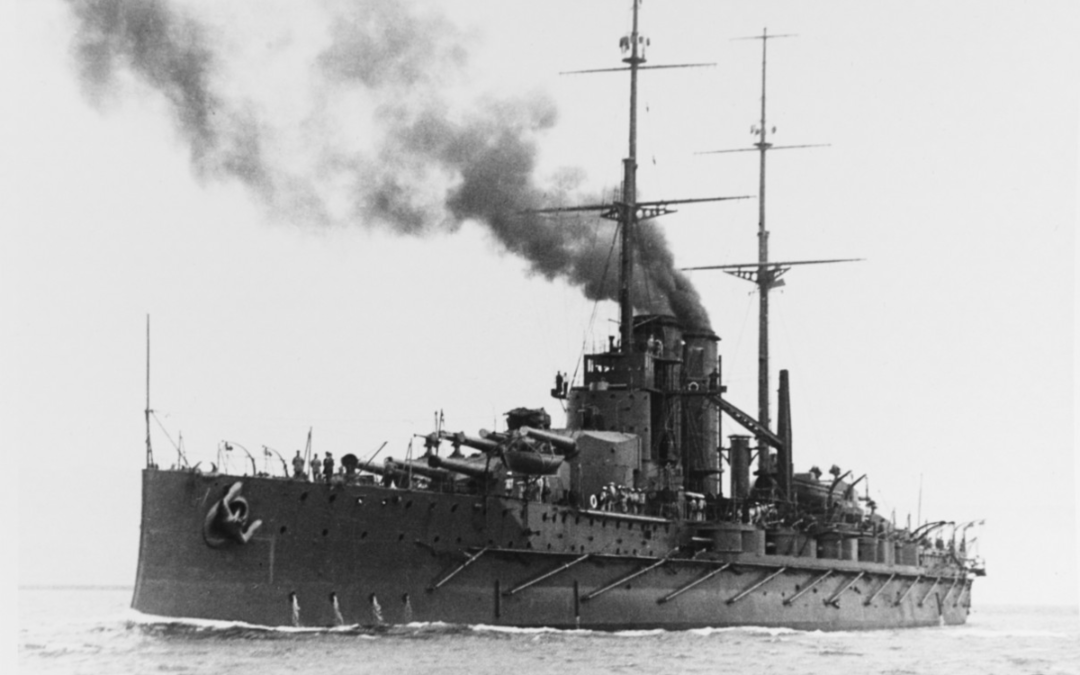
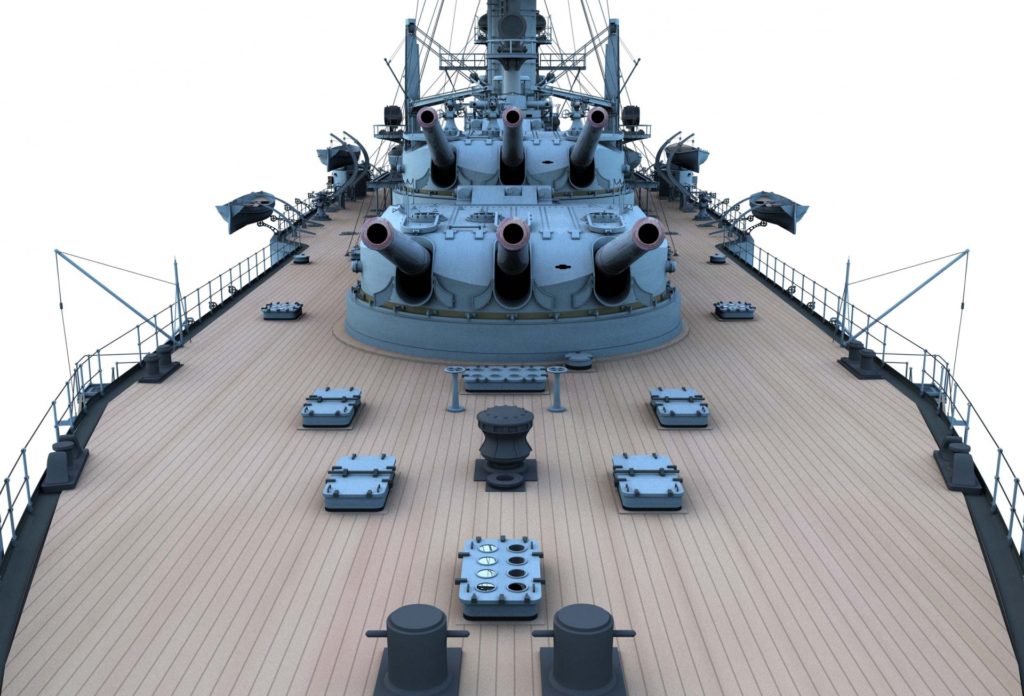
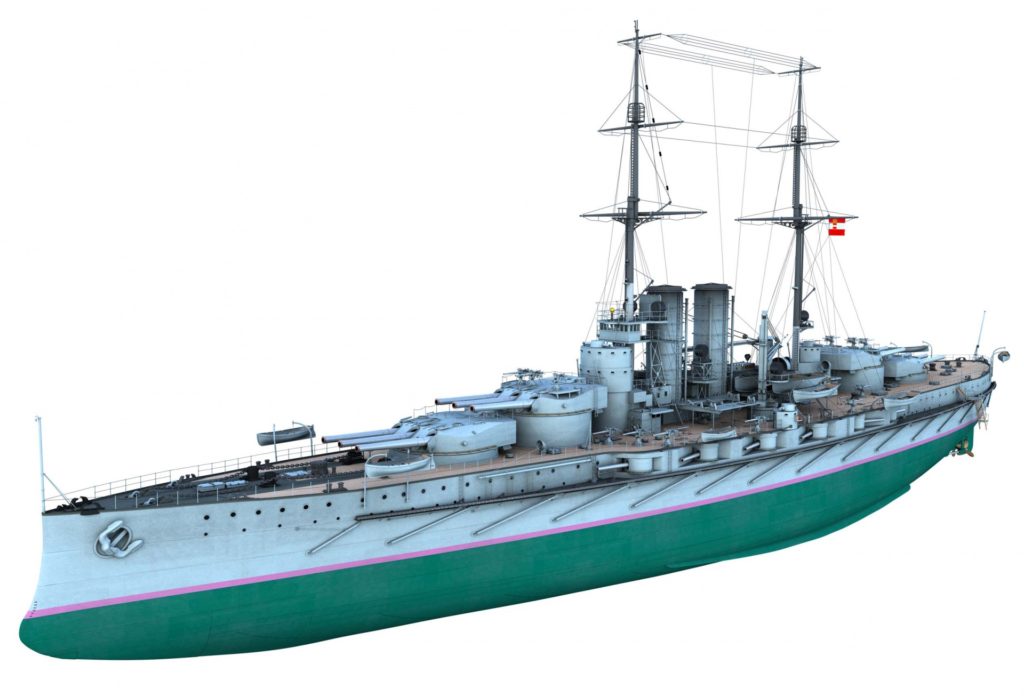
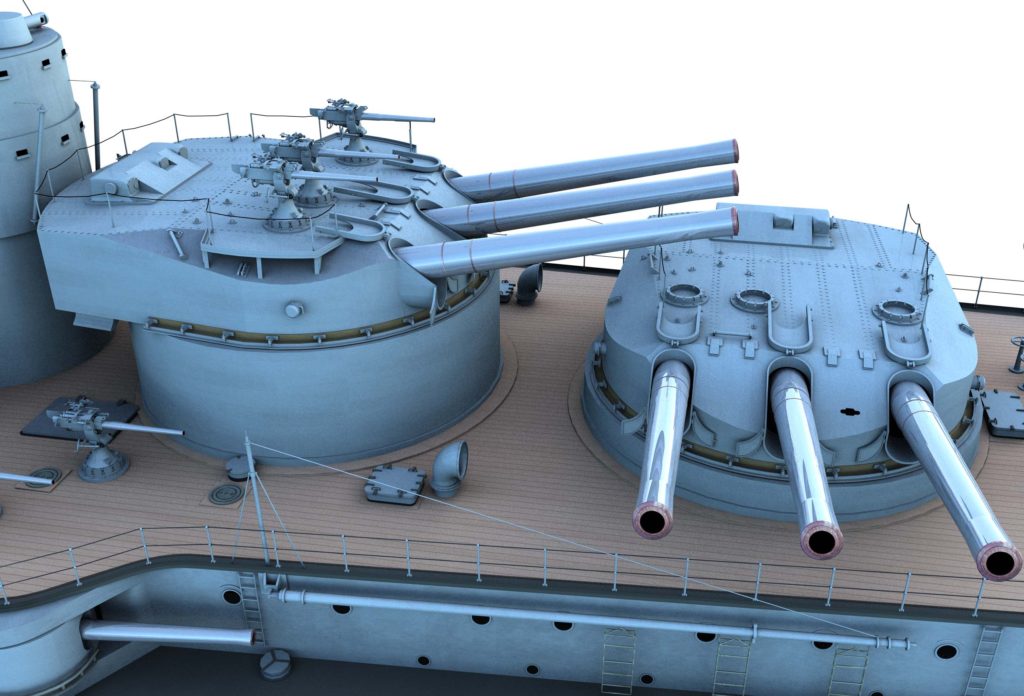
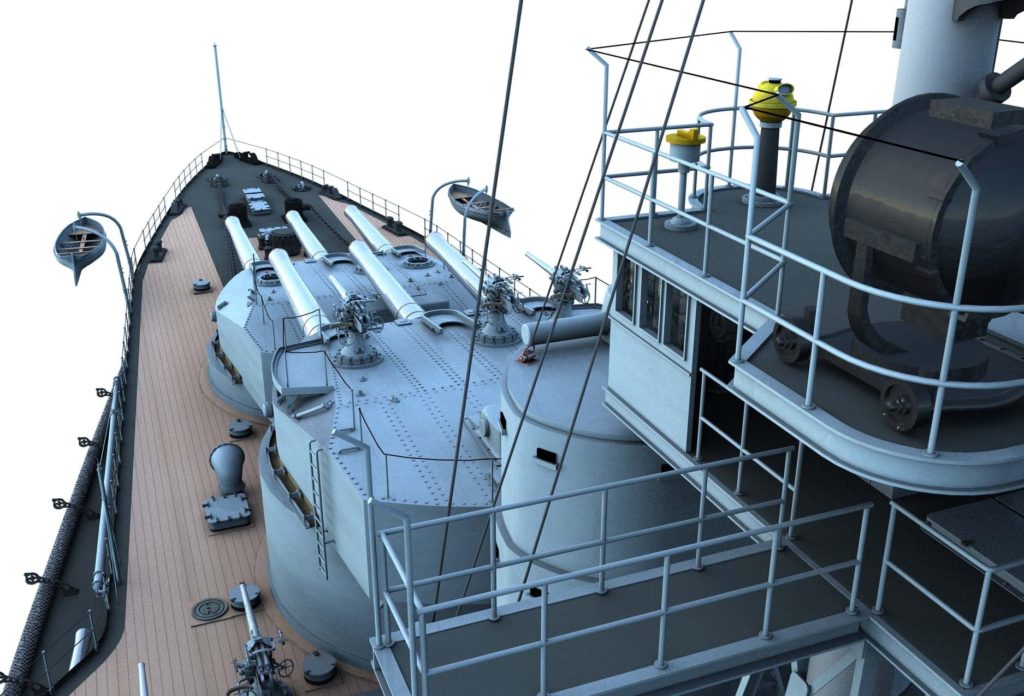
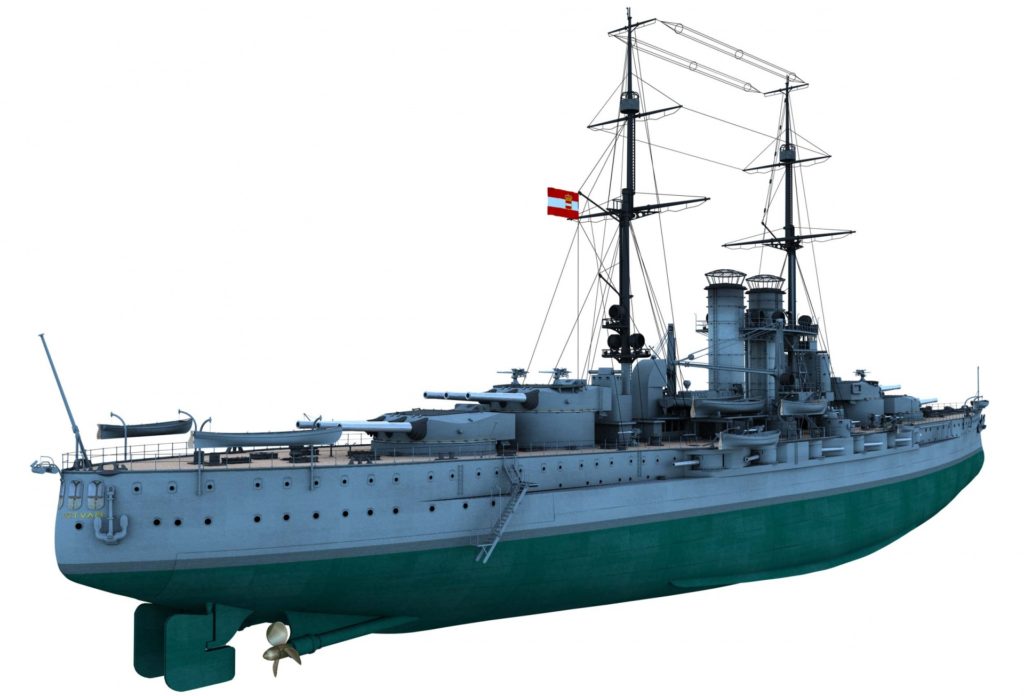
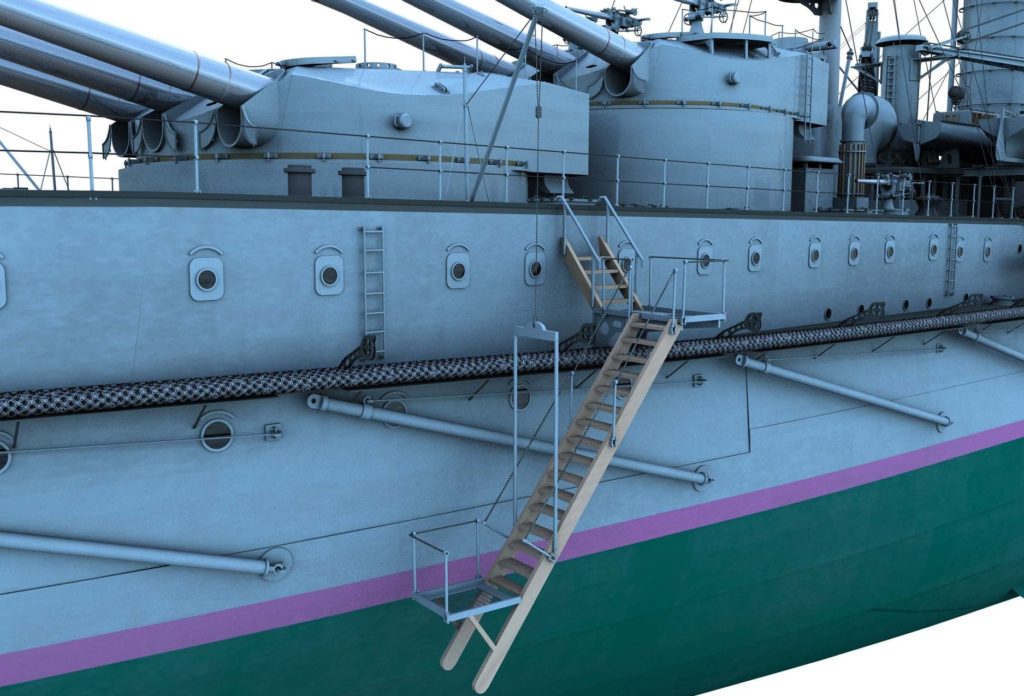
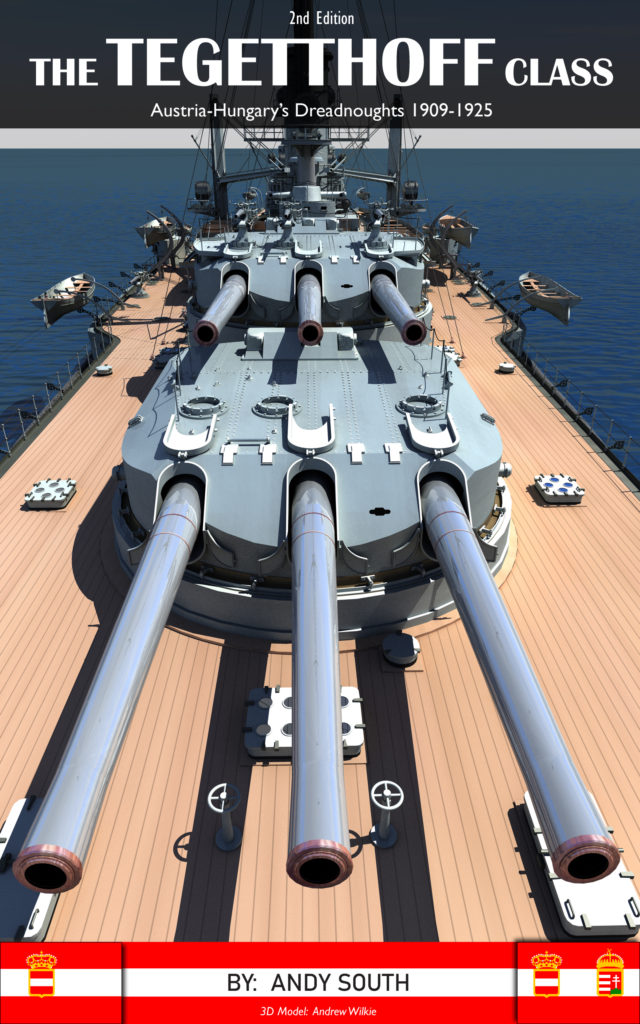

Recent Comments